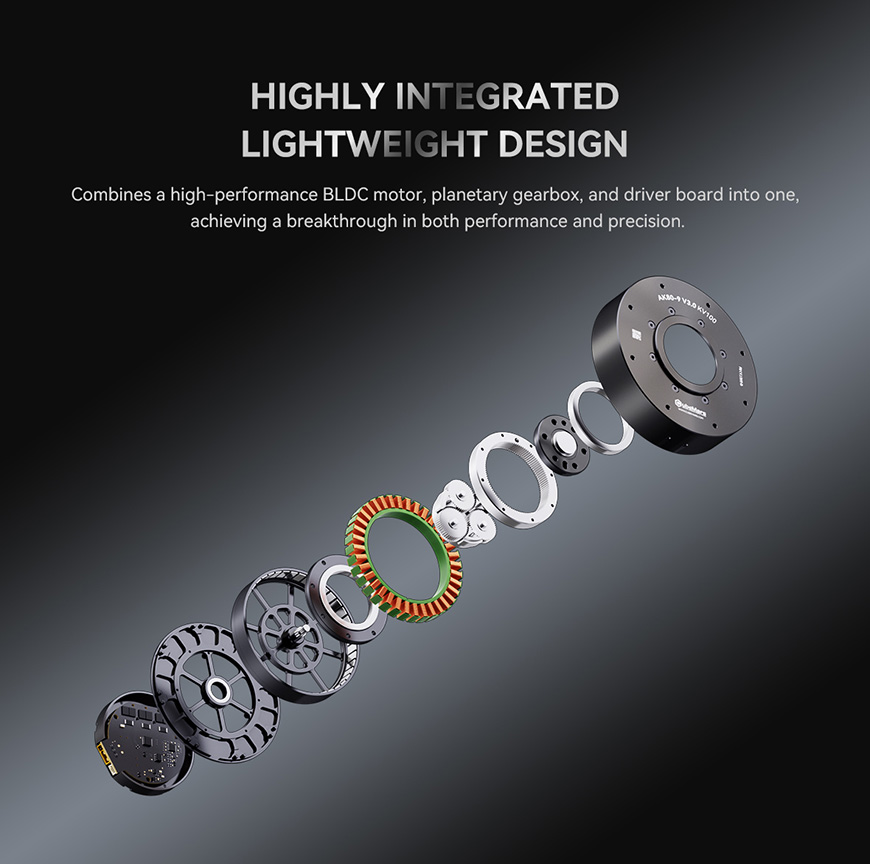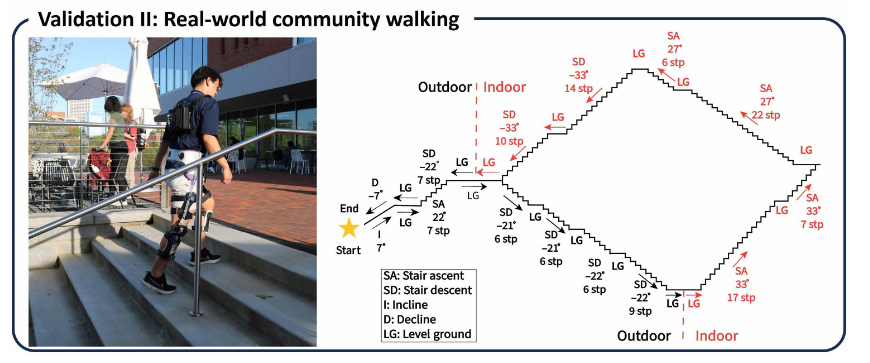- AI-Powered Lower-Limb Exoskeletons with CubeMars Actuators
- AI-Driven Adaptive Assistance: Sensing Terrain in Real-Time
- Real-Time Environmental Perception
- Smart Assist Mode Switching
- Energy Efficiency Gains
- Bio-Inspired Torque Assistance: Spring & Damper Control
- Uphill & Stairs: Spring-Like Stiffness Control
- Downhill: Damper-Like Energy Absorption
- Millisecond-Level Response Time
- Why CubeMars Actuators Are Ideal for Exoskeleton Robotics
- AK80-9 Actuator Highlights
- Quasi-direct Drive + Gear Reduction
- Paving the Way for Real-World Applications
CubeMars Robotic Actuator Powering Georgia Tech's AI Exoskeletons Featured In Science Advances
AI-Powered Lower-Limb Exoskeletons with CubeMars Actuators
Redefining Human Mobility
Georgia Tech, in collaboration with Stanford University and the University of Pennsylvania, has developed an advanced AI-driven exoskeleton system designed to enhance real-world walking efficiency. The lower-limb robotic exoskeleton, recently featured in Science Advances (AI-driven universal lower-limb exoskeleton system for community ambulation[1]), is fully powered by CubeMars AK80-9 KV100 Robotic Actuator - 9Nm Rated Torque, 48V, 485g, providing high-efficiency torque control and precision movement.
AI-Driven Adaptive Assistance: Sensing Terrain in Real-Time
Real-Time Environmental Perception
The system utilizes deep learning algorithms to achieve:
● Gait phase estimation in 300ms
● Slope detection within 800ms
It recognizes terrain conditions from -33° to +33°, distinguishing among flat ground, uphill, stairs, and downhill scenarios.
Smart Assist Mode Switching
Based on detected terrain, the exoskeleton automatically adjusts its torque-assist strategies:
Terrain Type | Slope Range | Assist Strategy |
Stairs | >18.5° | Maximum torque assistance |
Incline | 3.5°–18.5° | Progressive torque increase |
Flat | -3.5° to 3.5° | Minimal assistance |
Downstairs | < -18.5° | Damping control |
Energy Efficiency Gains
AI control improves metabolic energy savings by 86% over conventional methods (6.5% vs. 3.5%), with a user satisfaction rating of 7.2 out of 10.
Bio-Inspired Torque Assistance: Spring & Damper Control
Uphill & Stairs: Spring-Like Stiffness Control
Simulates natural knee spring dynamics with torque increasing linearly from 0.3 to 1.6 Nm/deg, allowing smooth and efficient uphill locomotion.
Downhill: Damper-Like Energy Absorption
Utilizes damping strategies to mimic hydraulic braking, with resistance up to 0.16 Nm·s/deg, reducing impact and joint stress.
Millisecond-Level Response Time
The actuator system runs at 100Hz control frequency, ensuring precise assist timing with<2.5% phase error based on real-time gait phase estimation.
Why CubeMars Actuators Are Ideal for Exoskeleton Robotics
AK80-9 Actuator Highlights

CubeMars AK80-9 robotic actuator enables lightweight design crucial for wearable exoskeletons, solving the common issue of “self-weight energy cost.”The AK80-9 power module is a highly integrated solution that combines a high-performance brushless motor, planetary gearbox, and driver into one, enabling high-torque and smooth operation.
The upper computer supports one-click intelligent parameter identification and seamless switching between Servo and MIT modes, significantly simplifying the tuning process. It goes beyond conventional control by achieving synchronized position, velocity, and acceleration control while featuring adaptive PID tuning, eliminating complexity and ensuring precise targeting.
Model | Rated Torque | Peak Torque | Maximum Torque Density | Rated Speed | Weight |
9Nm | 18Nm | 37Nm/kg | 390rpm | 485g | |
9Nm | 22Nm | 44.9Nm/kg | 390rpm | 490g |
Quasi-direct Drive + Gear Reduction
The unique combination of a 9:1 gear ratio and quasi-direct drive motor achieves:
● High torque output for climbing stairs
● Low impedance for smooth, natural walking
● No jerky movements—just seamless assist curves
Paving the Way for Real-World Applications
This groundbreaking project is open-sourced, providing access to CAD hardware designs and AI training datasets, accelerating the development of exoskeletons for:
● Medical rehabilitation
● Logistics and heavy-load assistance
● Personal mobility enhancement
CubeMars is now collaborating with the research team to co-develop next-generation integrated actuator modules, driving exoskeleton technology from research labs into everyday consumer markets.
References:
[1] Science Advances:AI-driven universal lower-limb exoskeleton system for community ambulation


